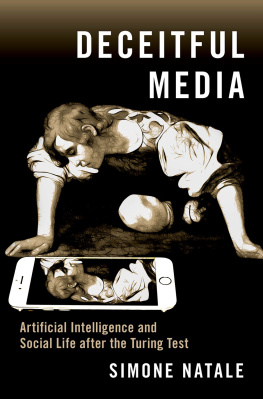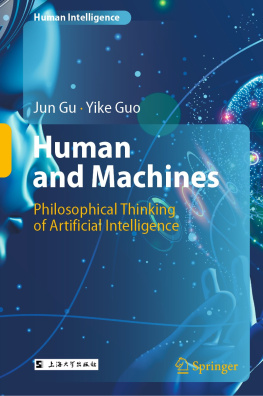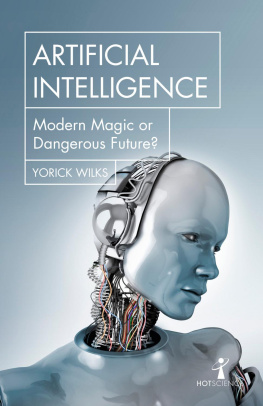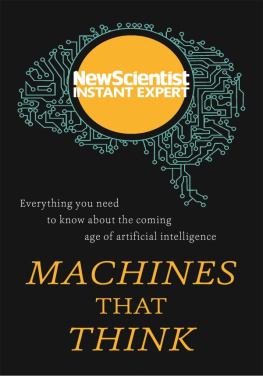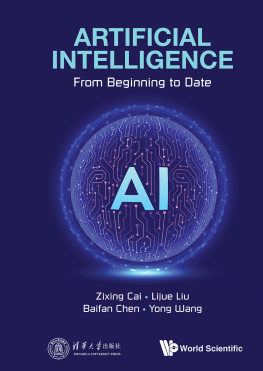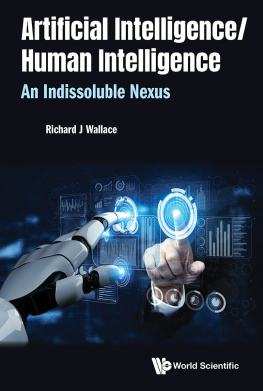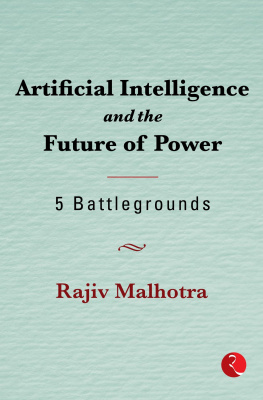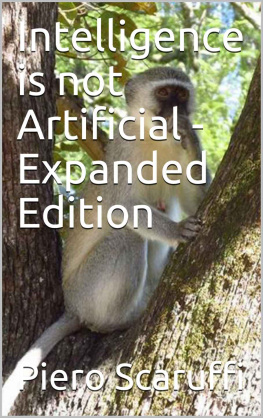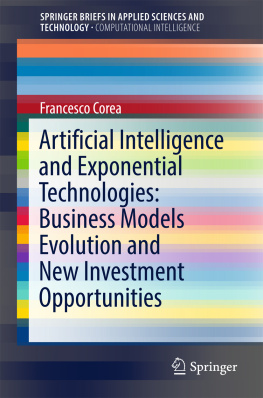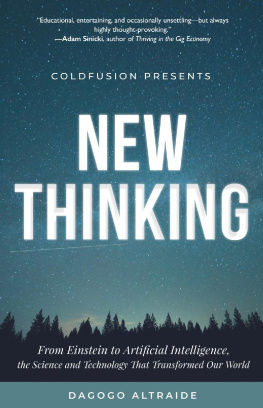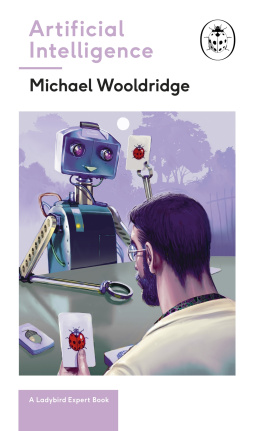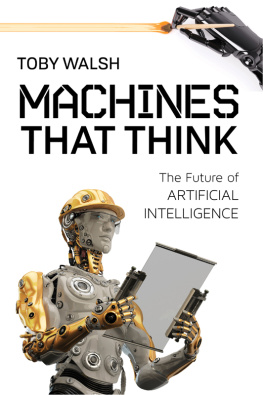Deceitful Media

Oxford University Press is a department of the University of Oxford. It furthers the Universitys objective of excellence in research, scholarship, and education by publishing worldwide. Oxford is a registered trade mark of Oxford University Press in the UK and certain other countries.
Published in the United States of America by Oxford University Press
198 Madison Avenue, New York, NY 10016, United States of America.
Oxford University Press 2021
All rights reserved. No part of this publication may be reproduced, stored in a retrieval system, or transmitted, in any form or by any means, without the prior permission in writing of Oxford University Press, or as expressly permitted by law, by license, or under terms agreed with the appropriate reproduction rights organization. Inquiries concerning reproduction outside the scope of the above should be sent to the Rights Department, Oxford University Press, at the address above.
You must not circulate this work in any other form and you must impose this same condition on any acquirer.
Library of Congress Cataloging-in-Publication Data
Names: Natale, Simone, 1981 author.
Title: Deceitful media : artificial intelligence and social life after the Turing test /
Simone Natale.
Description: New York : Oxford University Press, [2021] |
Includes bibliographical references and index.
Identifiers: LCCN 2020039479 (print) | LCCN 2020039480 (ebook) |
ISBN 9780190080365 (hardback) | ISBN 9780190080372 (paperback) |
ISBN 9780190080396 (epub)
Subjects: LCSH: Artificial intelligenceSocial aspects. | Philosophy of mind.
Classification: LCC Q335 .N374 2021 (print) | LCC Q335 (ebook) |
DDC 303.48/34dc23
LC record available at https://lccn.loc.gov/2020039479
LC ebook record available at https://lccn.loc.gov/2020039480
DOI: 10.1093/oso/9780190080365.001.0001
Contents
When I started working on this book, I had an idea about a science fiction story. I might never write it, so I reckon it is just fine to give up its plot here. A woman, Ellen, is awakened by a phone call. Its her husband. There is something strange in his voice; he sounds worried and somehow out of tune. In the close future in which this story is set, artificial intelligence (AI) has become so efficient that a virtual assistant can make calls on your behalf by reproducing your own voice, and the simulation will be so accurate as to trick even your close family and friends. Ellen and her husband, however, have agreed that they would never use AI to communicate between them. Yet in the husbands voice that morning there is something that doesnt sound like him. Later, Ellen discovers that her husband has died that very night, a few hours before the time of their call. The call should have been made by an AI assistant. Dismayed by her loss, she listens to the conversation again and again until she finally picks up some hints to solve the mystery. In fact, this science fiction story I havent written is also a crime story. To learn the truth about her husbands death, Ellen will need to interpret the content of the conversation. In the process, she will also have to establish whether the words came from her husbands, from the machine that imitated him, or from some combination of the two.
This book is not science fiction, yet like much science fiction, it is also an attempt to make sense of technologies whose implications and meaning we are just starting to understand. I use the history of AIa surprisingly long one for technologies that are often presented as absolute noveltiesas a compass to orient my exploration. I started working on this book in 2016. My initial idea was to write a cultural history of the Turing test, but my explorations brought exciting and unexpected discoveries that made the final project expand much beyond that.
A number of persons read and commented on early drafts of this work. My editor, Sarah Humphreville, not only believed in this project since the start but also provided crucial advice and punctual suggestions throughout its development. Assistant Editor Emma Hodgon was also exceedingly helpful and scrupulous. Leah Henrickson provided feedback on all the chapters; her intelligence and knowledge made this just a much better book. I am grateful to all who dedicated time and attention to read and comment on different parts of this work: Saul Albert, Gabriele Balbi, Andrea Ballatore, Paolo Bory, Riccardo Fassone, Andrea Guzman, Vincenzo Idone Cassone, Nicoletta Leonardi, Jonathan Lessard, Peppino Ortoleva, Benjamin Peters, Michael Pettit, Thais Sard, Rein Sikveland, and Cristian Vaccari.
My colleagues at Loughborough University have been a constant source of support, both professionally and personally, during the books gestation. I would like especially to thank John Downey for being such a generous mentor at an important and potentially complicated moment of my career, and for teaching me the importance of modesty and integrity in the process. Many other senior staff members at Loughborough were very supportive in many occasions throughout the last few years, and I wish particularly to thank Emily Keightley, Sabina Mihelj, and James Stanyer for their constant help and friendliness. Thanks also to my colleagues and friends Pawas Bisht, Andrew Chadwick, David Deacon, Antonios Kyparissiadis, Line Nyhagen, Alena Pfoser, Marco Pino, Jessica Robles, Paula Saukko, Michael Skey, Elzabeth Stokoe, Vaclav Stetka, Thomas Thurnell-Read, Peter Yeandle, and Dominic Wring, as well as to all other colleagues at Loughborough, for making work easier and more enjoyable.
During the latest stages of this project I was awarded a Visiting Fellowship at ZeMKI, the Center for Media, Communication, and Information Research of the University of Bremen. It was a great opportunity to discuss my work and to have space and time to reflect and write. Conversations with Andreas Hepp and Yannis Theocharis were particularly helpful to clarify and deepen some of my ideas. I thank all the ZeMKI members for their feedback and friendship, especially but not only Stefanie Averbeck-Lietz, Hendrik Khn, Kerstin Radde-Antweiler, and Stephanie Seul, as well as the other ZeMKI Fellows whose residence coincided with my stay: Peter Lunt, Ghislain Thibault, and Samuel Van Ransbeeck.
Some portions of this book have been revised from previous publications. In particular, parts of Figurations Working Papers series. I thank the reviewers and editors for their generous feedback.
My thanks, finally, go to the many humans who acted as my companions throughout these years, doing it so well that no machine will ever be able to replace them. This book is especially dedicated to three of them: my brother and sister and my partner, Viola.
I remember a visit I made to one of Queen Victorias residences, Osborne on the Isle of Wight.... Prominent among the works displayed there was a life-size marble sculpture of a large furry dog, a portrait of the Queens beloved pet Noble. The portrait must have been as faithful as the dog undoubtedly wasbut for the lack of color it might have been stuffed. I do not know what impelled me to ask our guide, May I stroke him? She answered, Funny you want to do that; all the visitors who pass stroke himwe have to wash him every week. Now, I do not think the visitors to Osborne, myself included, are particularly prone to magic beliefs. We did not think the image was real. But if we had not thought it somewhere we would hardly have reacted as we didthat stroking gesture may well have been compounded of irony, playfulness, and a secret wish to reassure ourselves that after all the dog was only of marble.

